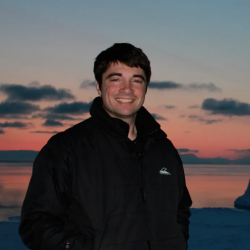In the field at last! TARSAN collects data at Thwaites Glacier
Wild 16, 397–417, 2022
Wild, C. T., K. E. Alley, A. Muto, M. Truffer, T. A. Scambos, and E. C. Pettit. 2022. Weakening of the pinning point buttressing Thwaites Glacier, West Antarctica. The Cryosphere 16, 397–417, 2022.
TARSAN team reaches McMurdo Station
After two months traveling, quarantine, training, packing, and just plain waiting at McMurdo Station, the TARSAN on-ice team is finally now on its way today to the U.S. National Science Foundation's (NSF) major logistical hub, WAIS Divide Camp. Today is January 3rd, 2022. (Photo above: McMurdo Station, Antarctica, from Hut Point. In the foreground is Scott’s first hut, from his 1902-1903 expedition. On the right side is Observation Hill.)
ITGC scientists addressed reporters on Monday, December 13, 2021, at the American Geophysical Union meeting, describing the rapid retreat of Thwaites Glacier and the implications that will have on our planet in the coming years. Antarctica’s Thwaites Glacier is retreating rapidly as a warming ocean slowly erases its ice from below, leading to faster flow, more fracturing, and a threat of collapse, according to an international team of scientists. The glacier is the size of Florida or Britain and currently contributes four percent of annual global sea level rise.
This Antarctic field season, the UK’s new polar ship RRS Sir David Attenborough, will support the International Thwaites Glacier Collaboration by delivering cargo to the English Coast in Antarctica. With this scheduled, researchers showcased the work of ITGC when the icebreaker visited Greenwich, London, last month (28-30 October) for a special event to support the UK’s Presidency of COP26.







